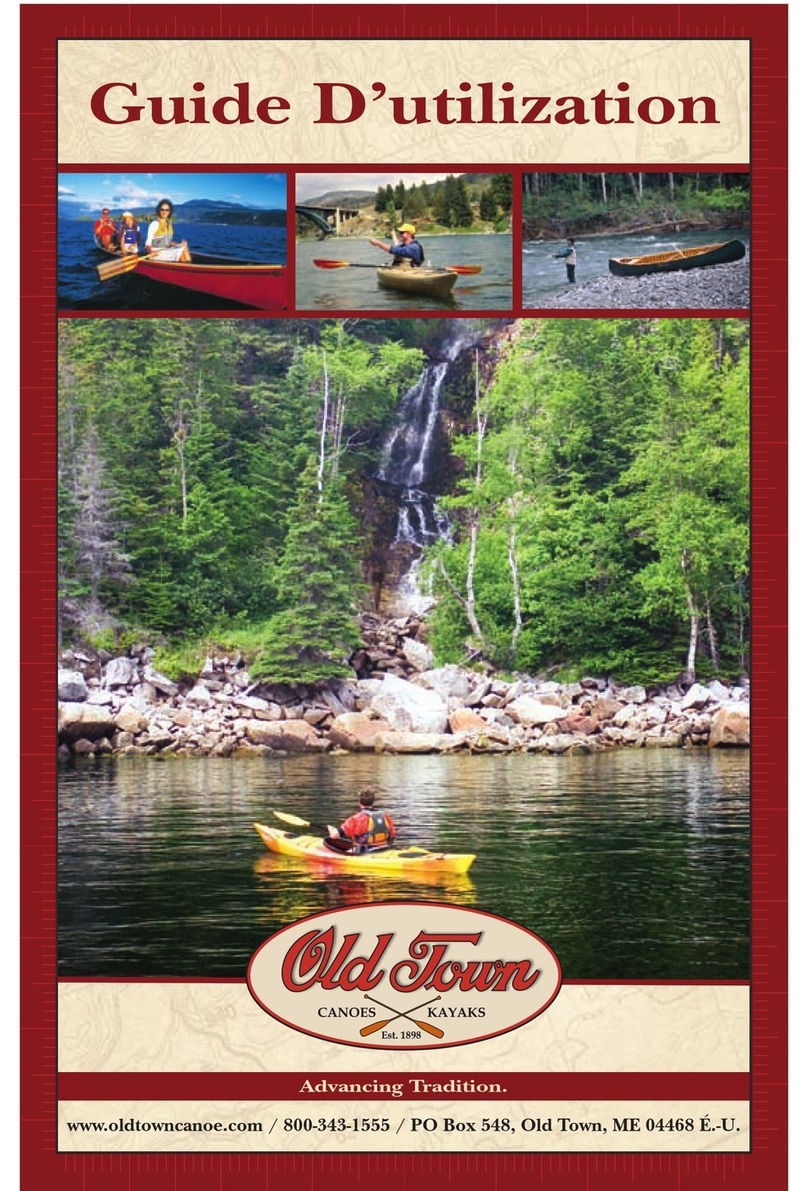
If you must store your boat outside,
we recommend you tie it down. Strong
winds can catch the underside, flip it
and cause damage.
Canoes should always be stored
upside-down, even overnight. Set them
on saw horses, blocks, slings or garage
rafters if at all possible, as this will al-
low the gunwales to carry the weight.
Store your kayak cockpit-side down,
on its side or on end. The best way to
store your polyethylene or composite
kayak is to run webbing straps under
the bulkhead points (or widest points)
and hang the boat or place on cradle-
type saw horses. This will keep the
decks from being distorted. Do not
use the strap eyes, carrying handles or
scupper holes to hang your boat. Do
not store your boat on its hull. If the
hull warps, your kayak will not perform
as it should. Use a cockpit cover to
keep dust and critters out.
Attention to proper storage will help
ensure years of excellent service from
your canoe or kayak.
CARE & MAINTENANCE
Your boat is designed to require
minimal maintenance, and a little
timely care will ensure a lifetime of
enjoyment. Whenever you wash your
boat use mild soap and water. Rinse
your boat and hardware thoroughly
after paddling in salt-, brackish or
polluted water. A quick rinse of the
moving parts of the foot braces, rudder
and skeg box keeps them clean and
operating smoothly.
Occasional operational checkups
will keep your boat in tip top condi-
tion. Check neoprene hatch covers,
cables, buckles, straps and other mov-
ing parts for wear, and replace them
when necessary. Keep all nuts tight and
check hardware exit holes for water-
tight silicone seals. Give your hull and
deck a thorough review annually. Light
nicks, scratches and scrapes are part
of the paddling experience, but deep
scratches should be repaired.
|07
Normally wooden parts are oiled or
coated with polyurethane for protec-
tion from the elements. Any areas that
become chipped or worn need only
to be sanded and touched up with a
quality polyurethane, or sanded and re-
oiled. We recommend you inspect and
touch-up your boat’s woodwork prior
to off-season storage.
To prevent unneccesary wear to
your boat, do not drag the boat across
rough surfaces.
If the hull on your boat is distorted
due to an accident, improper storage
or transportation, correction may be
simple: brief exposure to the heat of the
sun often restores a hull to its original
shape. If that fails, hull shape can often
be restored by applying a low heat
source (such as a low wattage bulb or
hair dryer) to the deformed area. When
the hull is pliable enough, hand-shap-
ing can restore the hull. CAUTION:
Overheating can burn you or damage
the hull.
All canoe and kayak parts and
repair kits are available through
your local dealer. To locate your
nearest dealer, contact us or visit
our website.
For more care and maintenance
tips, go to our website.




























